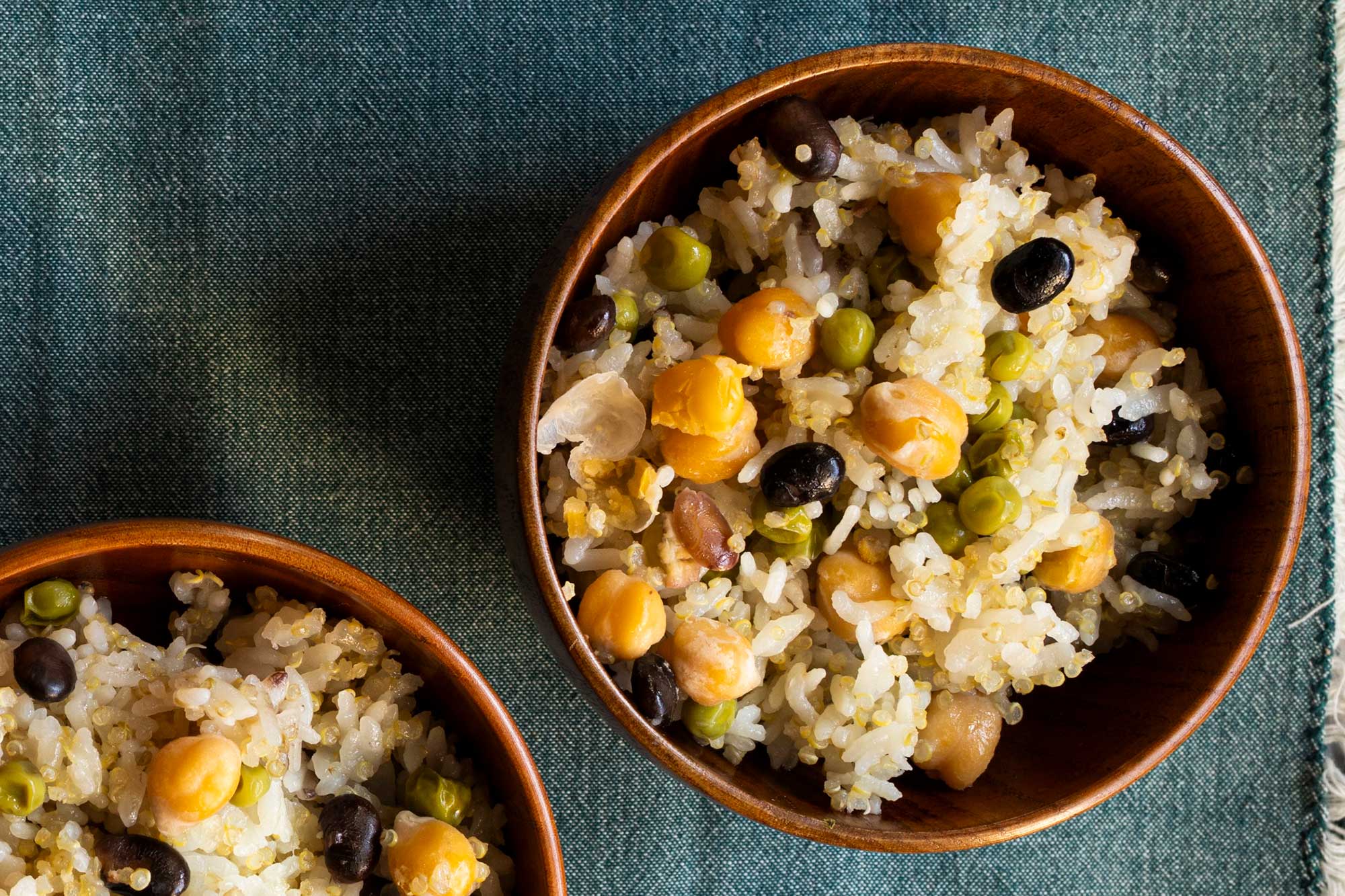This story is part of On Repeat, a series in which we ask top chefs, cookbook authors, and other famous foodies about the dishes they just can’t quit.
Around here we emphasize low-waste cooking as a key pillar of a planet-friendly diet, but a lot of scrappy recipes from around the world are as much about stretching supplies as cutting waste. The Korean dish called japgokbap (multigrain rice), for instance, helped families through a severe white rice shortage in the early-to-mid 20th century. By mixing in various beans and grains like millet or barley, households were able to parcel out what little rice they had.
“My mother recalls how she would watch her grandpa eat white rice,” says Sarah Ahn, who shares her family’s recipes at ahnestkitchen.com and also works at America’s Test Kitchen. “He would be sure to not leave a single grain left in his bowl, because it was a very special treat.” Today, japgokbap is something she and her mom, Nam Soon Ahn, eat On Repeat more than any other rice dish. The mix of rice, quinoa, and a trio of legumes is so engrained in their family’s foodways that it earned a place in the duo’s new cookbook, Umma: A Korean Mom’s Kitchen Wisdom and 100 Family Recipes.
Why I love it
“I just love how it honors a recipe that they ate [in order] for us to be here today. So for me, it’s very important that this recipe that was eaten during hardships is being seen and celebrated and loved.
“It’s very budget friendly, it’s convenient, and it adds nutrition to your diet. I also love it because it’s so versatile. Essentially you’re meal-prepping the beans and cooking them ahead of time so that you can add them to your rice, but you can use those cooked beans anywhere—they’re so great to have on hand.”
What I’ve changed
“You could use whatever beans you have. If you don’t have quinoa you could use millet—Mom’s mother actually used millet. If you want to make it even healthier, you could swap out the white rice for brown rice. My mom also sometimes adds lentils to this. There are so many variations you could do.”
What else I’m into right now
- Saving the skin. The Korean radish is commonly used in Korean cuisine, and often people will tell you to peel the radish. We don’t peel it. In our cookbook we suggest people peel away the dirty parts, the bruised parts, but keep the good parts of the skin, because that Korean radish skin is like gold. There’s so much nutrition and flavor in it, so don’t waste that.
- Freezing prepped garlic. In Korean cuisine, garlic is a huge ingredient that we rely on in many of our dishes. So we often buy garlic in bulk and we mince it through a food processor, and we’ll have a bunch of minced garlic on hand that we freeze. We transfer the minced garlic to a zipper-lock bag, seal the bag, flatten it out, and then use a bench scraper or the back of a knife to create even square blocks. The zipper-lock bag makes it easy to conveniently grab a square of garlic. You don’t have to wait for it to thaw: You just snap it and it comes off.
- Not trashing the bags. We try not to use too much plastic, but we do sometimes depend on zipper-lock bags. So we wash them religiously, as long as it’s not soiled with something like marinated chicken or garlic. But for things that hold dry items or snacks, once we use it all, we wash it, dry it, and we reuse those bags.

This article originally appeared in the
Cool Beans newsletter.
Read the whole story here.

